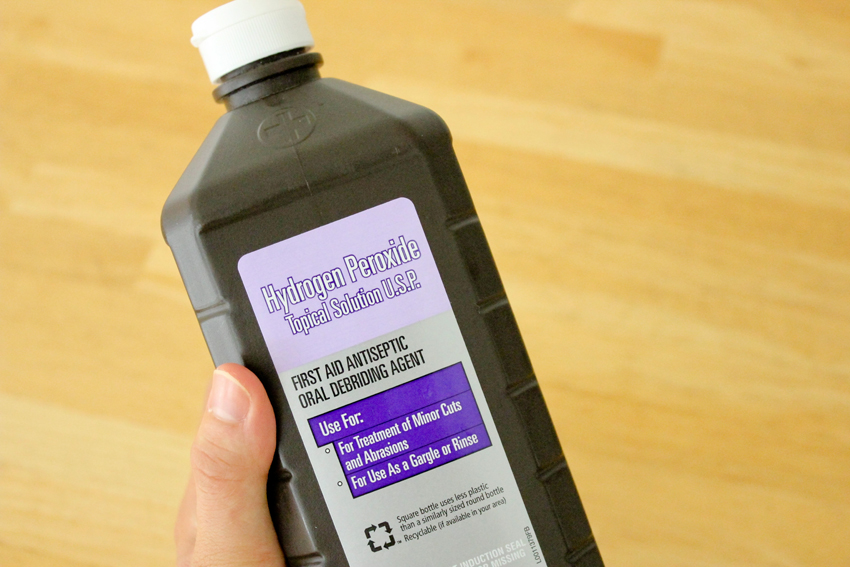Hydrogen peroxide (H2O2) is a clear, slightly more viscous than water, liquid commonly used as an oxidizing agent. Generally, hydrogen peroxide concentrations of 3% – 9% are used in solutions for consumer products, though most are about 3%. Hydrogen peroxide mixes easily, or is miscible, in water and dissolves in alcohol and is relatively safe in low concentrations. Higher concentrations of hydrogen peroxide become increasingly dangerous and tend to be used for industrial applications.
A Chemical Used for Bleaching
People use products containing hydrogen peroxide to whiten or lighten parts of their body. Some purchase hair bleaching crème to lighten dark hair. Some over-the-counter whitening toothpastes, gels and strips contain hydrogen peroxide and help whiten teeth. Other types of peroxides, such as calcium peroxide, are also used in oral care peroxides.
Hydrogen peroxide can be found in laundry bleaches that are useful for removing stains. It is considered more environmentally-friendly than chlorine for bleaches.
Hydrogen Peroxide as an Antiseptic
Hydrogen peroxide solutions are sold in drugstores and can be used as a disinfectant. Oral cleansers with hydrogen peroxide clean sores and other mouth irritations.
Other Uses for Hydrogen Peroxide
In forensics, hydrogen peroxide is added to solutions containing the chemi-luminescent compound luminol. The solution is used at crime scenes to detect blood. The resulting oxidation reaction that occurs when the luminol-hydrogen peroxide solution comes in contact with hemoglobin will produce light.
When it comes to glow sticks, the oxidation reaction performed by hydrogen peroxide creates an ester that decomposes into a cyclic peroxy compound that further decomposes and releases energy. This energy excites electrons in a dye causing them to jump to a higher level and then fall back down to a lower level. The energy produced from the electron going from the higher level to the lower gives off light.
Hydrogen Peroxide is a Hazardous Material
According to the Agency for Toxic Substances and Disease Registry (ATSDR) there are a few health hazards associated with exposure to hydrogen peroxide:
- Inhaling 3% hydrogen peroxide can cause respiratory irritation
- Contact with 3% hydrogen peroxide can cause mild eye irritation
- Inhaling concentrations over 10% can cause severe pulmonary irritation
- Eye contact with high concentrations can cause ulceration or perforation of the cornea
- Ingesting low concentrations may cause vomiting and a variety of gastrointestinal problems
- Ingesting higher concentrations may cause burns or even loss of consciousness leading to respiratory paralysis









